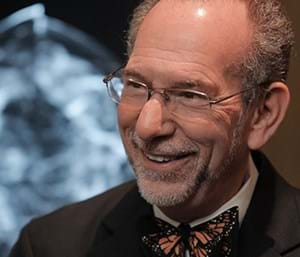Medical Case Studies
Explosive growth in demand for RadLink’s services facilitated the need for expansion to six clinics and 2 reporting centres. Dr. Chee Way Eng, Managing Director at RadLink, recognised the need for large, single wide-screen displays to replace the traditional dual screen Reporting workstations. This would eliminate the middle bezels and create the ability to view monochrome and colour imaging on the same screen.
Dr. László Tabár recently used EIZO’s multi-modality monitors for the first time as the key teaching tool at his International Breast Seminar Series. Dr. Tabár’s Advanced Course on Multi-Modality Detection and Diagnosis of Breast Diseases with Emphasis on Breast MRI, held in Australia, was the setting for his first EIZO RadiForce multi-modality experience
Dr. Michael N. Linver, MD is the Director of Mammography at the Breast Imaging Center, Albuquerque and Adjunct Professor of Radiology at the University of New Mexico.
"The RANZCR Standards have recommendations on monitor deliverables. We’ve always needed better image quality, better resolution, and the ability to see more on our screens. EIZO has exceeded our expectations."
- Dr. Jeremy Sharr MBChB, FRANZCR (Managing Radiologist)
Trusting Eizo since 2005, Elizabeth Wende Breast Care in Rochester, NY is internationally recognised as a leader in the field of breast imaging and breast cancer diagnosis. It is one of the largest freestanding breast imaging centers in the US with ACR accreditation and FDA Certification.
ACR took into consideration only the top monitor manufacturers for this project
and knew these monitors would have to be flexible enough to cater to the many
different types of users who would come through their facility. These monitors
would have to be versatile and technically stable enough to view images in PET,
CT, Angiography, and even Breast Imaging.
Shimane Prefectural Central Hospital installed in its operating room two 60-inch RadiForce LX600W monitors and one 47-inch RadiForce LX470W monitor, large monitor managers including the LMM0802, and peripheral devices. We asked Dr. Satoshi Kamihira, Chief Surgeon of the Department of Cardiovascular Surgery, about his impressions having used them for about one year.
The Sakakibara Heart Institute performed the first successful cardiac trauma surgery in Japan in 1936 and has since established itself as a leading hospital for cardiovascular diseases in the world.









